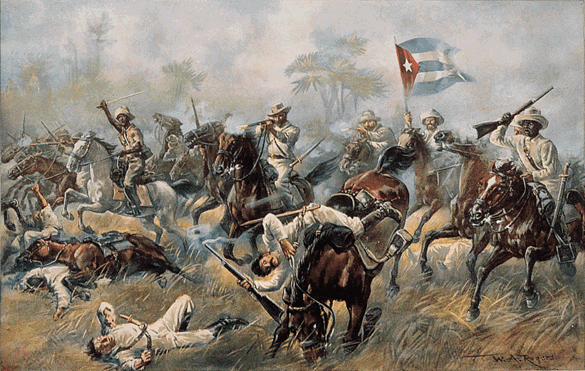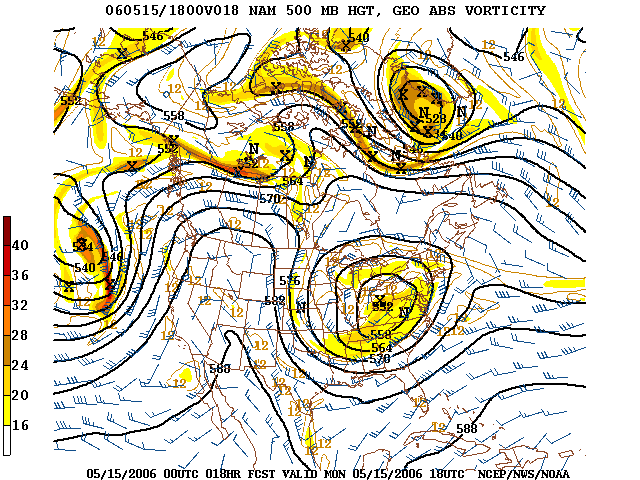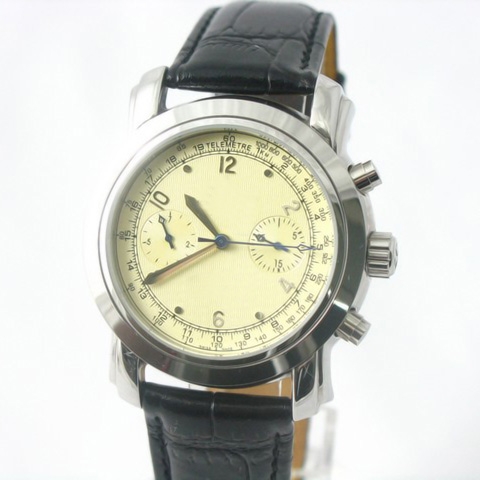 There be explosions in them thar Yemen hills! Aside from the fact that Yemen has one of the highest birthrates in the world, with a population increase of 700,000 every year, it also suffers from a massive increase of al-Qaeda militants, pouring into the country as pressures rise in Afghanistan and Pakistan. This has led to much warfare. The US military has been helping Yemen deal with these dangerous pests, training their counter-terror forces, assisting them with intelligence and logistics to carry out air strikes, one of which successfully killed six members of an al-Qaeda cell. The truth is, many of the techniques employed to wipe out a military target, have also been used to supply consumers like you with goods.
There be explosions in them thar Yemen hills! Aside from the fact that Yemen has one of the highest birthrates in the world, with a population increase of 700,000 every year, it also suffers from a massive increase of al-Qaeda militants, pouring into the country as pressures rise in Afghanistan and Pakistan. This has led to much warfare. The US military has been helping Yemen deal with these dangerous pests, training their counter-terror forces, assisting them with intelligence and logistics to carry out air strikes, one of which successfully killed six members of an al-Qaeda cell. The truth is, many of the techniques employed to wipe out a military target, have also been used to supply consumers like you with goods.
They say necessity is the mother of invention. So you can protest war all you want, but just remember that throughout history the necessities to succeed in battle have led to many inventions that society uses today, inventions that we ironically couldn't survive without.
Logistics
This system for the supply and distribution of resources can be traced back to the Classical period. The Greek and Roman empires utilized it so that their soldiers could move from a military base to various service locations.
Postal Service
During 580-529 BCE the Persian emperor, Darius the Great, had the first known postal service created. This allowed for better communication between the emperor and his armies on the battlefield.
Ambulance
Spain in 1847 had an exceptionally well treated army for the times. One of the practices that the Spanish army created was 'ambulancias' (medical hospitals). However, at this time the soldiers were not collected until the combat had ceased.
 Weather Forecast Technology
Weather Forecast Technology
In 1835 the creation of the telegraph system led to accurate weather forecast predictions. The telegraph allowed for weather conditions to be gathered from a large area and reported quickly. Francis Beaufort and Robert FitzRoy are credited with this system; and the Royal Navy accepted the innovative technology.
Margarine
In 1869 French emperor, Napoleon III, found that keeping his army supplied with butter was a considerable expense. Therefore, he offered a prize to anyone who could develop a cheaper alternative. French chemist, Hippolyte Mège-Mouriés, won for his mixture of clarified beef fat, water and a bit of tributyrin.
Canned Food
More food difficulties concerning the military arose for emperor Napoleon. Concerned with keeping the large French army fed, Napoleon offered a prize for a method of food preservation. Nicholas Appert conceived the idea of preserving food in bottles. He discovered that if food is sufficiently heated and kept in an airtight container, it will not go bad.
 Wrist Watches
Wrist Watches
When wrist watches initially hit the fashion scene gentlemen did not wear them because they were designed for females. However, soldiers found that pocket watches were awkward during battle and began to use leather straps to fasten them to their wrists. This convenient trend caught on and in the 1880s Girard-Perregaux equipped the German Imperial Navy with similar pieces.
Detergent
1916 was the year that changed the chemistry which is used for manufacturing soap. Fat was used in the traditional method for manufacturing soap, but there was a shortage in Germany during WWI. German scientists were forced to create a new synthetic method as a substitute.
Tissue Paper (Kleenex)
The material used to make tissue paper was originally known as "cellucotton". Cellucotton was used in WWI gas mask filters as a substitute for cotton because cotton was needed to manufacture surgical dressings that medics required to bandage wounded soldiers.
Sonar (Sound, Navigation and Ranging)
Paul Langevin created echo location to detect submarines during WWI but this technology was released too late to use in the war; SONAR has been used by militaries everywhere ever since. Civilian uses for SONAR include locating shipwrecks, oceanography and marine biology studies, etc.
Trench Coat
This fashionable item of clothing was first designed for life inside a literal trench. Thomas Burberry invented gabardine intentionally for the British army to use. These coats went over so well with the soldiers that after WWI ended many chose to continue wearing them and a fashion trend was born.
Radar (Radio Detection and Ranging)
This invention is credited with saving Britain during WWII. The creation of radar required a team of scientific minds and years of work to complete; but Robert Watson-Watt, a Scottish physicist, designed the first one that was put into use in 1935. Since WWII radar use has been standard for all commercial flights.
Cavity Magnetron
While working on the radar project Sir John Turton Randall invented this high-powered vacuum tube. The cavity magnetron is still widely used in various radar applications, as a part of microwave ovens and to obtain medical X-rays.
Microwave Oven
Percy Spencer was another scientist involved in the radar project. The story goes that while working on a radar a candy bar inside of his pocket melted. This inspired him to develop a new method of cooking with radiation. His method involved microwaves, emitted by the magnetron, that penetrated and cooked food from the interior.
Rocket Technology
Wernher Von Braun was involved in the development of rocket technology in Nazi-Germany. He invented the V2 rocket which was used to bombard London during WWII. After the war was over he became head of the US rocket program where he worked with many of his former German colleagues to develop a rocket ship.
 Jet Engine
Jet Engine
Dr. Hans von Ohain (German air plane designer) and Sir Frank Whittle (RAF pilot) are both recognized as being co-inventors of the jet engine during the 1930's. Both these men came up with their own prototypes while being unaware that the other was working on a similar project.
High-Octane (Jet) Fuel
With the invention of the jet engine came the need for proper jet fuel. High-octane gas was invented in the US to fuel their jet fighter-planes.
The Manhattan Project
This project resulted in the devastating "doomsday device" that was used to end the conflict in the Pacific Theater of Operations. However, there are positive benefits that emerged from this collaboration of great thinkers. For example this work proved some of the theory on quantum mechanics (that lead to further advancements in physics) and it provided an alternative form of power.
Biker Jackets
Sticking with the jet theme; the style of leather ackets worn by most bikers that was made famous in Marlon Brando's "The Wild One" , was derived from pilot jackets. Many WWII veterans chose to wear old flight jackets while ridding their 'iron horses' and started this trend.
Synthetic Rubber
When the US entered WWII they found that there was a massive shortage of natural rubber. Since this is required for many pieces of military equipment an alternative was needed. This resulted in the creation of synthetic rubber as a solution to the problem. Now there are multiple types of synthetic rubber that is used by businesses like the automobile industry, footwear, etc.
Silly Putty
Scottish engineer, James Wright, worked on developing synthetic rubber during WWII. He attempted the combination of boric acid and silicone oil in a test tube. This substance "polymerized" and resulted in a gooey and bouncy putty. This was eventually marketed as a toy for children.
Penicillin
While its existence was known before WWII it was during the heavy casualties of war that the worth of penicillin was brought into the spotlight. This resulted in studies on how to mass produce the treatment for the front lines.
Anti-Biotics
The success of penicillin as a life-saving treatment led to further research on the subject. During the late 1940's and in to the early 1950's the discovery of streptomycin, chloramphenicol, and tetracycline resulted in the basis for anti-biotics.
Anti-Malaria
Malaria research received new life and military funding during the world wars when large amounts of soldiers serving in tropical areas were falling ill. A medical breakthrough emerged with the discovery of Chloroquine in 1934 by the German chemist Hans Andersag. However, the drug would not be released until 1946 because of the war.
Chemical Pesticides
Prior to the outbreak of WWII Swiss chemist named Paul Müller discovered that DDT killed insects. The US and other governments took this discovery and had DDT powder distributed to their soldiers in order to ward off disease carrying insects. WWII became the first war where there were fewer casualties from diseases like malaria and typhus than from bullets and bombs. The end of WWII saw the beginning of the chemical age in pesticides due of this success.
 Aerosol Spray
Aerosol Spray
Origins for bug repellent go further back in time, but Americans Lyle Goodhue and William Sullivan are given credit for inventing of the modern spray can. In 1943 they patented their design for a refillable spray can (nicknamed the 'bug bomb') for soldiers to use against disease carrying insects.
Jerry Can
The jerry can was invented as a part of Hitler's secret preparations for WWII. The name is derived from the term 'Jerry" which was a wartime label for Germans. There are still similar designs used today for water and fuel containers.
Slinky
During WWII a sailor working on a torsion spring dropped it on the floor and noticed the interesting manner in which it flip-flopped before him. This sailor returned home and created a long steel ribbon tightly coiled into a spiral which was used to amuse children for years to come.
Jeep
The jeep hit the scene in 1941, when the US Army asked for bids on a quarter-ton, four-wheel-drive vehicle that would be used for recon purposes. This generated responses from Ford, Bantam and Willys who would all eventually manufactured these vehicles for the Army.
Night Vision
The original night vision technology was created by the US army and used in WWII. Since then there has been advancements made in the field of night vision; one need only watch a scandalous "sex tape" on the net to see how far this has come along.
GPS (Global Positioning System)
For everyone who has their directions being dictated to them while they drive a "thank you" is owed to the US Department of Defense (DOD) and Ivan Getting who developed this navigation technology for the military.
 Hummer
Hummer
"The world's most serious 4×4″ originated in 1979 when AM General started work on the M998 Series High Mobility Multi-Purpose Wheeled Vehicle (HMMWV, commonly called "Humvee") for the US military. Production of versions of the Humvee for civilian use (called the HUMMER ) commenced in 1992. Remember who to blame the next time you get cut off by the over-sized vehicle.
Chemical Laser
The idea for a chemical laser emerged from the carbon dioxide laser program in the late 1960s and early 1970s. This was picked up by Navy researchers and their contractors, such as Pratt & Whitney Aircraft and General Electric, etc. This technology evolved into the continuous wave laser which is used for industrial cutting.
Internet
Thanks is owed to the military for your finding this article on the world wide web. In 1969, the DOD was researching new ways to send and receive digital information and the internet emerged out of this work. So began the age of the "information super-highway".
Prosthetic Limbs
The development of prosthetic limb technology has a strong correlation with the waging of war. In fact there are current developments (involving robotics) taking place to meet the needs brought on by the second Iraq war.
Infrared
Another current example involves the defense contractor Flir Systems. They are taking the thermal imaging work done for the military and creating ways to market it for civilian use. For example, BMW is incorporating a thermal imaging camera in to their M5 series; and technicians will be able to sue this type of camera is to measure moisture in walls and find gas leaks .
Hopefully the future great minds of mankind will be able to dream up useful inventions and create further technological advancements without the threat of war for motivation.

















No comments:
Post a Comment